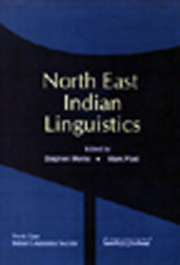15 - Quest for a Script
from Language Description and Language Endangerment
Published online by Cambridge University Press: 26 October 2011
Summary
Introduction
Arunachal Pradesh is a land of great cultural and linguistic diversity. Situated on the extreme North-eastern part of the Union of India, it shares international borders with the People's Republic of China on the north, Myanmar on the East and the Royal Kingdom of Bhutan on the West. Its geographic link to the rest of India is from the south via Assam. Arunachal Pradesh is spread over 83,743 sq. km. As per the Provisional Population Census of 2001 the population of the state is approximately twelve lakh (1.2 million). In Table 1 we reproduce the population count of the districts of Arunachal Pradesh.
At present Arunachal Pradesh has sixteen districts, although we have listed only fifteen here. This is because the new district Anjaw (formerly the southern half of Lohit district, which is primarily inhabited by Taraon and Kaman Mishmi and the Mahayana Buddhist Meyor tribe) was formed on 3 December, 2003. Its population count is estimated at 18,428. The population counts in Table 1 include both indigenous and non-indigenous residents. Non-indigenous residents are mostly government officials, defense personnel, teachers, medical practitioners, businessmen and others; in general, permanent settlement by non-indigenous persons remains tightly restricted in Arunachal Pradesh.
Arunachal Pradesh is home to around twenty-six major tribes. These major tribes have their own sub-tribes. The tribes are spread over all sixteen districts; the official tribal compositions of the fifteen districts identified in the 2001 Census are represented in Table 2.
- Type
- Chapter
- Information
- North East Indian Linguistics , pp. 255 - 270Publisher: Foundation BooksPrint publication year: 2008
- 1
- Cited by



